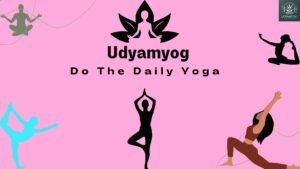Where Inner Peace Meets Outer Strength
Capture attention with a relatable question, statement, or story.Set the theme for the post, focusing on a specific yoga practice, philosophy, or wellness tip.
Break the content into digestible sections, using clear headings.
Use engaging language, metaphors, and smooth transitions.
Include practical tips or personal insights (e.g., benefits of a specific pose, meditative practices).
Summarize the key points.
End with a powerful call to action or reflection.
Where Inner Peace Meets Outer Strength

Finding Stillness in Movement: The Power of Breath in Yoga”
Introduction: In a world that’s constantly moving, how often do we truly stop and listen to our breath? Yoga, at its core, teaches us the art of breathing – a simple act, yet profound in its ability to ground us in the present moment. Whether you’re flowing through a sequence of sun salutations or sitting quietly in meditation, your breath is your anchor, guiding you toward stillness in the midst of movement.
The Breath as a Compass
Yoga is much more than physical poses; it’s a practice of self-awareness. And where does that awareness begin? With the breath. Pranayama, the yogic practice of breath control, is a tool that can transform your experience on and off the mat. Each inhale invites new energy, and each exhale releases tension.
Take a moment now, wherever you are. Close your eyes, soften your shoulders, and inhale deeply through your nose. Feel your lungs expand. Exhale slowly, releasing any stress you’ve been holding onto. In that brief moment, you’ve begun the journey of stillness.
Where Inner Peace Meets Outer Strength

Flowing with the Breath
As you transition from one yoga pose to another, let your breath lead. In Vinyasa Flow, for example, each movement is synchronized with your breath, creating a dance between body and mind. Imagine moving into Downward Dog: as you exhale, you push your hips toward the sky, grounding your feet and hands into the earth. With every inhale, your spine elongates, and your chest opens slightly more.
Your breath becomes the rhythm, a soft drumbeat that tunes your awareness inward. It is in this harmonious flow that we learn to find stillness—not by being motionless, but by being present.
Meditation in Movement
There is a common misconception that stillness is only found in seated meditation. But the truth is, moving with intention and breath can be equally meditative. The repetitive sequences of Surya Namaskar (Sun Salutation), when performed with full focus on your breath, allow your mind to quiet, and your body to soften into a moving meditation.
Imagine standing in Mountain Pose (Tadasana)—your feet firmly planted, your heart lifted, and your hands pressed together at your chest. As you inhale, raise your arms skyward, stretching through your fingertips. On your exhale, fold forward, releasing any thoughts or worries, surrendering to gravity. Here, the breath guides the body into its natural rhythm, creating space not only in the muscles but also in the mind.
Conclusion: Finding Stillness in the Present
Yoga teaches us that stillness isn’t about stopping; it’s about being fully present. Whether you’re flowing through a dynamic sequence or sitting in quiet meditation, your breath is the gateway to mindfulness. Each inhale is an invitation to draw in peace, and each exhale a reminder to let go.
As you step onto your mat today, take a few extra moments to tune into your breath. Let it be your compass as you move, and notice how stillness can be found not in the absence of movement, but in the presence of breath.
Call to Action: What does stillness feel like for you? Next time you practice, focus on the rhythm of your breath and notice how it changes your experience. Let me know in the comments how the power of breath has transformed your yoga journey.

Writing Tips for Clarity and Flow:
- Use Simple, Descriptive Language: Avoid overly technical jargon. Even in advanced yoga topics, your readers should feel invited, not overwhelmed.
- Guide the Reader’s Experience: Incorporate sensory cues like “feel your breath,” “ground your feet,” or “soften your gaze.”
- Create a Conversational Tone: Engage readers by asking questions, sharing personal stories, or giving them small exercises to try.
- Mindful Pacing: Just like in yoga, balance active (informative) sections with more reflective, peaceful moments in your writing.
- Where Inner Peace Meets Outer Strength
Would you like to focus on a specific yoga topic for your blog post, such as a particular pose or style?


Very Good post